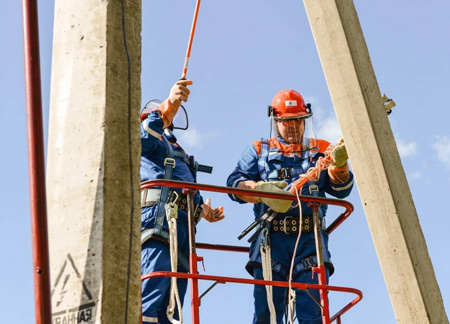
-
 Afrikaans
Afrikaans -
 Albanian
Albanian -
 Amharic
Amharic -
 Arabic
Arabic -
 Armenian
Armenian -
 Azerbaijani
Azerbaijani -
 Basque
Basque -
 Belarusian
Belarusian -
 Bengali
Bengali -
 Bosnian
Bosnian -
 Bulgarian
Bulgarian -
 Catalan
Catalan -
 Cebuano
Cebuano -
 Corsican
Corsican -
 Croatian
Croatian -
 Czech
Czech -
 Danish
Danish -
 Dutch
Dutch -
 English
English -
 Esperanto
Esperanto -
 Estonian
Estonian -
 Finnish
Finnish -
 French
French -
 Frisian
Frisian -
 Galician
Galician -
 Georgian
Georgian -
 German
German -
 Greek
Greek -
 Gujarati
Gujarati -
 Haitian Creole
Haitian Creole -
 hausa
hausa -
 hawaiian
hawaiian -
 Hebrew
Hebrew -
 Hindi
Hindi -
 Miao
Miao -
 Hungarian
Hungarian -
 Icelandic
Icelandic -
 igbo
igbo -
 Indonesian
Indonesian -
 irish
irish -
 Italian
Italian -
 Japanese
Japanese -
 Javanese
Javanese -
 Kannada
Kannada -
 kazakh
kazakh -
 Khmer
Khmer -
 Rwandese
Rwandese -
 Korean
Korean -
 Kurdish
Kurdish -
 Kyrgyz
Kyrgyz -
 Lao
Lao -
 Latin
Latin -
 Latvian
Latvian -
 Lithuanian
Lithuanian -
 Luxembourgish
Luxembourgish -
 Macedonian
Macedonian -
 Malgashi
Malgashi -
 Malay
Malay -
 Malayalam
Malayalam -
 Maltese
Maltese -
 Maori
Maori -
 Marathi
Marathi -
 Mongolian
Mongolian -
 Myanmar
Myanmar -
 Nepali
Nepali -
 Norwegian
Norwegian -
 Norwegian
Norwegian -
 Occitan
Occitan -
 Pashto
Pashto -
 Persian
Persian -
 Polish
Polish -
 Portuguese
Portuguese -
 Punjabi
Punjabi -
 Romanian
Romanian -
 Russian
Russian -
 Samoan
Samoan -
 Scottish Gaelic
Scottish Gaelic -
 Serbian
Serbian -
 Sesotho
Sesotho -
 Shona
Shona -
 Sindhi
Sindhi -
 Sinhala
Sinhala -
 Slovak
Slovak -
 Slovenian
Slovenian -
 Somali
Somali -
 Spanish
Spanish -
 Sundanese
Sundanese -
 Swahili
Swahili -
 Swedish
Swedish -
 Tagalog
Tagalog -
 Tajik
Tajik -
 Tamil
Tamil -
 Tatar
Tatar -
 Telugu
Telugu -
 Thai
Thai -
 Turkish
Turkish -
 Turkmen
Turkmen -
 Ukrainian
Ukrainian -
 Urdu
Urdu -
 Uighur
Uighur -
 Uzbek
Uzbek -
 Vietnamese
Vietnamese -
 Welsh
Welsh -
 Bantu
Bantu -
 Yiddish
Yiddish -
 Yoruba
Yoruba -
 Zulu
Zulu


dec . 25, 2024 15:50 Back to list
Affordable Rates for Chemical Earthing Rods and Installation Services
Understanding Chemical Earthing Rod Prices
In the world of electrical installations, safety is paramount. One of the crucial components in ensuring safety is grounding systems, where chemical earthing rods play a significant role. These rods are designed to provide a low-resistance path for electric currents to dissipate into the earth, reducing the risk of electrical shocks and enhancing system reliability. This article will explore the factors influencing the prices of chemical earthing rods and their importance in various applications.
What are Chemical Earthing Rods?
Chemical earthing rods are typically made from conductive materials, coated with conductive chemicals that enhance their capability to ground electrical systems efficiently. Unlike traditional earthing systems, which may rely solely on physical grounding mechanisms like copper or galvanized steel rods, chemical earthing rods utilize moisture-retaining chemicals that increase conductivity, especially in dry soil conditions. This innovative design ensures that the grounding system remains effective, regardless of environmental conditions.
Factors Influencing Prices
1. Material Quality The type of materials used in manufacturing chemical earthing rods significantly affects their price. High-quality conductors, like copper and steel with specialized coatings, tend to be more expensive due to their durability and better conductivity.
2. Chemical Composition The efficacy of the chemical coating is crucial for the performance of the earthing rod. Different manufacturers may use varying formulas, influencing both the cost and effectiveness. Premium chemical compositions that provide long-lasting conductivity often come at a higher price point.
3. Length and Diameter The size of the earthing rod also plays a vital role in determining its price. Standard lengths typically range from 2 to 4 meters, with prices increasing for longer or thicker rods due to the additional material requirements.
chemical earthing rod price

4. Brand Reputation Established brands with a proven track record of reliability and safety often charge more for their products. Investing in a reputable brand can offer peace of mind, knowing that the grounding system is built to high standards.
5. Market Demand Prices can fluctuate based on the demand for chemical earthing rods in various industries, including telecommunications, construction, and renewable energy sectors. During periods of high demand, prices may rise as suppliers adjust to the market conditions.
Average Price Range
The price of chemical earthing rods can vary widely based on the factors mentioned above. On average, one can expect to pay anywhere from $20 to $100 for a standard rod, depending on its specifications. Bulk purchases typically reduce the price per unit, making it more economical for larger projects. Businesses and contractors should consider the long-term benefits of investing in higher-quality rods, which may save costs on repairs and replacements.
Importance of Chemical Earthing Rods
Chemical earthing rods are integral to ensuring the safety and longevity of electrical systems. They help prevent equipment damage during electrical surges and protect individuals from electric shock. Furthermore, in industries that involve sensitive electronic equipment, like data centers and telecommunication facilities, proper earthing is critical.
Conclusion
In summary, understanding chemical earthing rod prices is essential for anyone involved in electrical installations and maintenance. By considering the quality of materials, chemical compositions, length, and brand reputation, buyers can make informed decisions that not only meet their immediate requirements but also enhance safety in the long run. Although these rods might seem like a small component within a vast electrical system, their role is undeniably significant in protecting both people and equipment from electrical hazards. As technology continues to evolve, the importance of investing in quality grounding solutions like chemical earthing rods will only increase, guaranteeing reliable performance in a rapidly developing electrical landscape.
Latest news
What Are Construction Tools and How Are They Used?
NewsJul.11,2025
Professional-Grade Duct Rodding Tools for Superior Cable Installation
NewsJul.11,2025
Enhancing Safety and Efficiency with Modern Hot Stick Solutions
NewsJul.11,2025
Empowering Cable Installation with Advanced Rodder Solutions
NewsJul.11,2025
Elevate Your Cable Installation Projects with Cable Pulling Tools
NewsJul.11,2025
Efficient Cable Handling Solutions: Cable Rollers for Sale
NewsJul.11,2025











